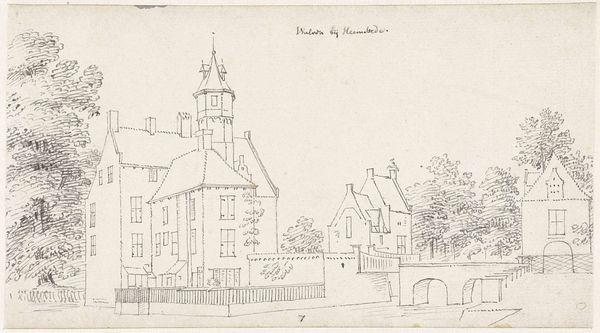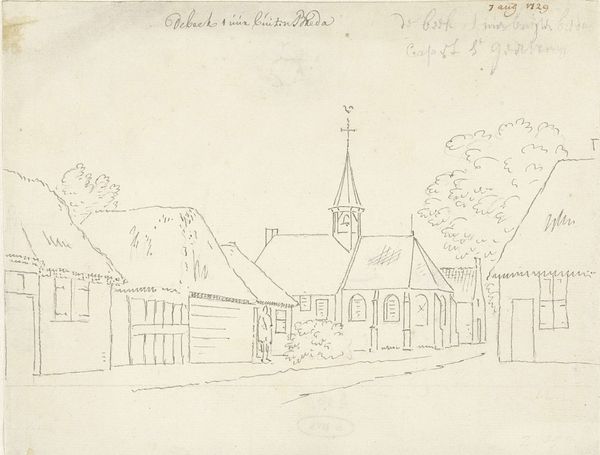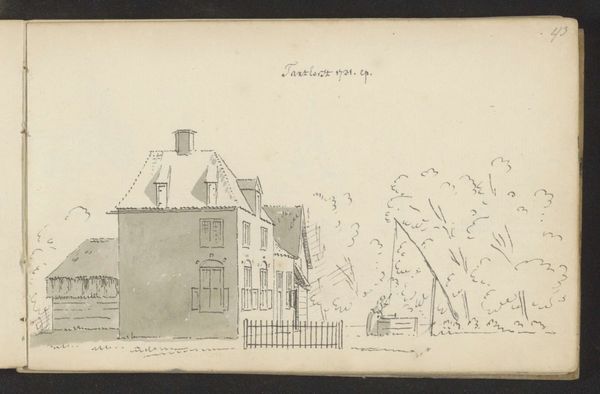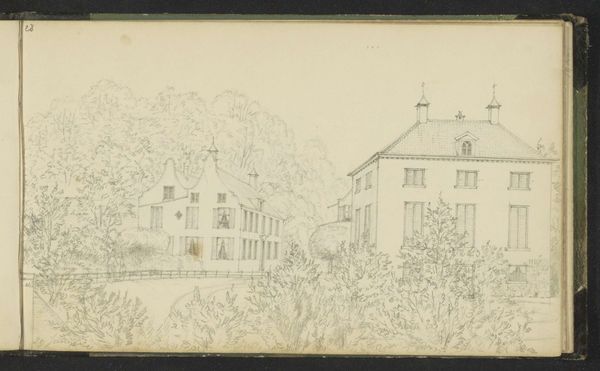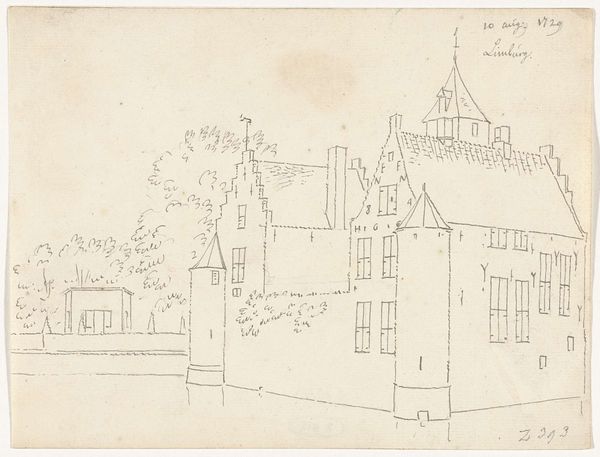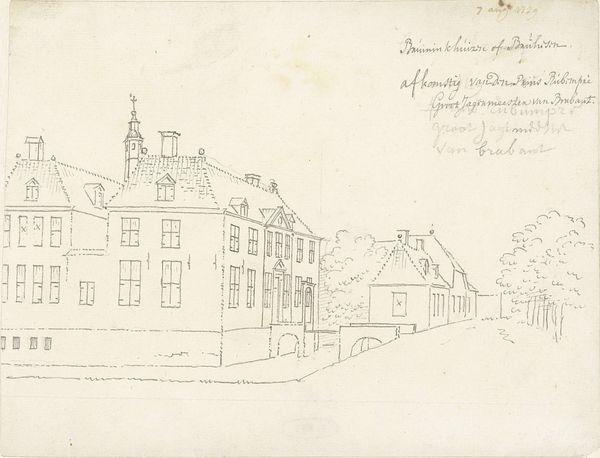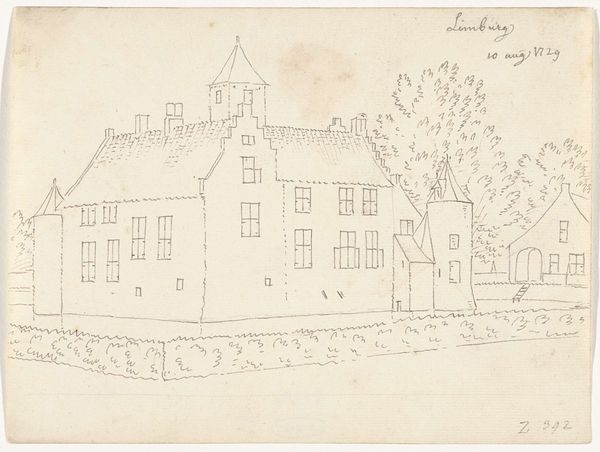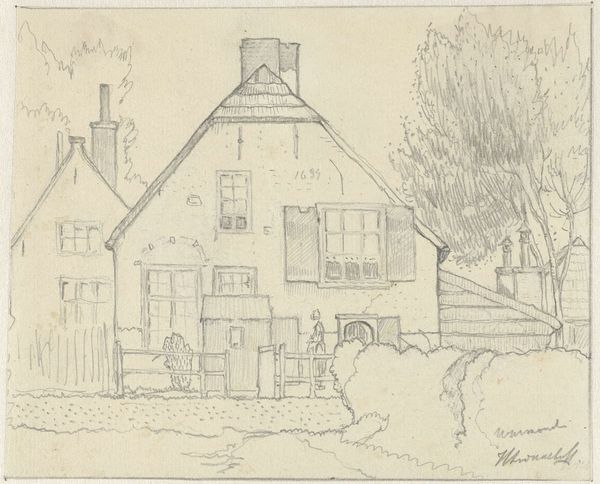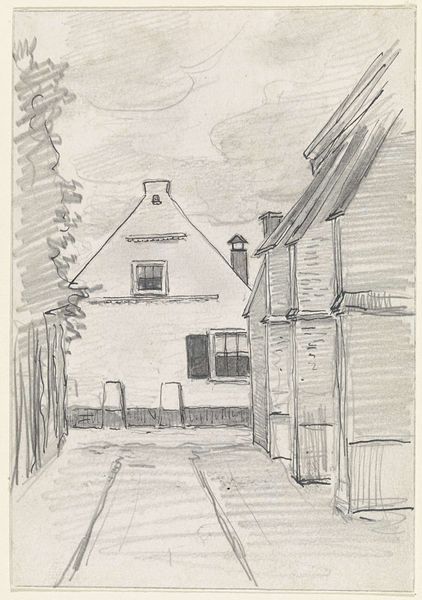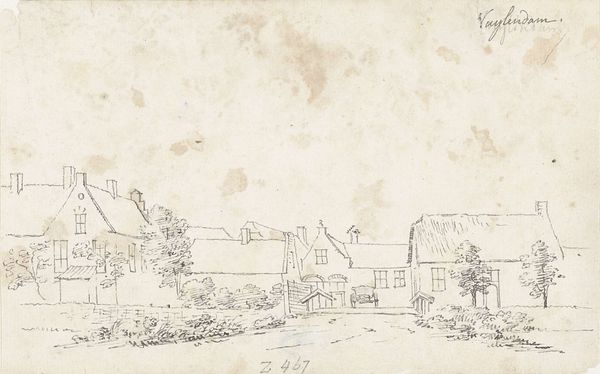
drawing, paper, pencil, architecture
#
drawing
#
dutch-golden-age
#
landscape
#
paper
#
geometric
#
pencil
#
architecture
Dimensions: height 149 mm, width 198 mm
Copyright: Rijks Museum: Open Domain
Curator: What a delicate pencil drawing. There's a certain quiet to it, a stillness despite all the geometric forms defining this building. Editor: Indeed. This is "Het huis Borstelle te Oosterhout" – Borstelle House in Oosterhout. It's a drawing by Cornelis Pronk, likely created between 1726 and 1729, rendered in pencil on paper. A fine example of Dutch Golden Age landscape art, now held at the Rijksmuseum. Curator: Pronk clearly focused on capturing the architectural details. I wonder, what does Borstelle House *represent* beyond just being a building? Is there something deeper here? The rigid gate is prominently displayed at the front and center of the image. Editor: I'd argue the house itself symbolizes the aspirations of the Dutch elite during that era. The geometric architecture—carefully mapped out here—speaks to order, control, and prosperity achieved through trade and expanding influence. Note how the house is framed; even the natural surroundings, the trees, appear deliberately positioned to highlight this structure. Curator: I find it telling how Pronk uses the stark linearity of the lines that form the gate and architectural details to suggest this controlled prosperity you mention. Almost a celebration of civic architecture and what it represents within the Republic. This precision serves as both description and declaration. Did these precise and symmetrical designs affect its cultural status and how architecture was viewed during the Dutch Golden Age? Editor: Undeniably so. There was immense pride associated with these structured environments, reflected in countless paintings and drawings. This architectural ideal communicated power, good governance, and societal harmony—at least, that's the story the elite wished to convey through these carefully constructed images. Curator: And one disseminated through art itself! It's a fascinating insight into how images can reflect, and also actively shape, societal values. The symbolism isn't just within the walls of Borstelle House; it's etched into the very act of creating and viewing this image. Editor: Absolutely. Every stroke, every calculated angle is laden with meaning and reflects a certain image that the Dutch wished to disseminate out to the rest of the world. Curator: Thinking about this drawing, it’s interesting to consider its presence here, in the Rijksmuseum. This setting allows us to appreciate Pronk's precise work, while also pondering the broader social narrative woven into its lines. Editor: And for me, contemplating the symbols embedded within these carefully structured architectural portraits continues to be profoundly illuminating, as it serves as a reflection of the society's deeper values and anxieties.
Comments
No comments
Be the first to comment and join the conversation on the ultimate creative platform.

